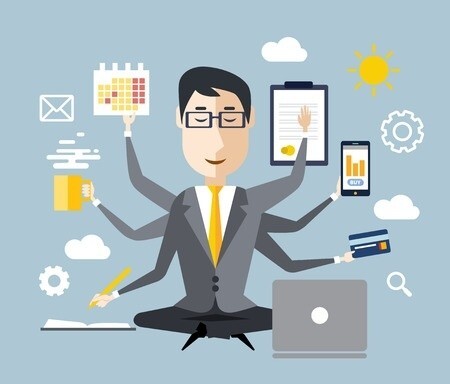
With all the time people spend looking down at their phones, future generations may be endowed with additional neck muscles to manage the posture. We don’t have to wait for one of the side effects of too much time in screen mode. Researchers have found that when the default in every spare second is to automatically check a digital device, you are doing serious damage to memory and learning.
The impulse to fill spare moments with a check of electronic devices robs brain neurons of the downtime they need to process and remember thoughts. Ideas, problems, dilemmas, musings, and experiences don’t have the space to be weighed, so we have a hard time remembering them, research at the University of San Francisco suggests.
In experiments with rats, they discovered that only when the animals took a break from activity were they able to process the patterns of a new experience. They suspect humans operate the same way. In fact, a very novel study from the University of Michigan, which examined how humans (monitored by portable brain sensors) reacted to natural surroundings, found the same dynamic. Walking in a park or in a natural setting created a meditative state in the brain ideal for reflection and processing.
NO TIME TO THINK
The research is providing a very good picture of why so many feel so overwhelmed these days in the always-on world. There’s no time to think. We can’t prioritize, solve problems, or take the time needed to plan an organized workday or time off the clock to refuel the batteries. Instead, there is constant commotion and busyness, which masquerades as productive behavior, but is actually very different from forward progress. Commotion isn’t motion. It’s a mechanical momentum without intentionality or mobility.
Nonstop busyness has become the real business today. Many of us live to be occupied, while being unconscious to what it is that we’re actually doing, since there’s no time for thinking. For busyness to work, it has to be connected with thought and prioritization. Otherwise, everything that comes through the unfiltered digital pipeline is urgent.
When there’s no allowance for critical thought, there’s frenzy and frazzle. Thinking is how we tamp down the load, decipher paths forward, delegate, and make adjustments to how we do our tasks that help us work smarter. It’s how we process the experiences and notions that plant the seeds that lead to discoveries and solutions.
SQUEEZING OUT MEMORIES
When we sleep, our brains process the events of the day, look for patterns, and file the data in our memories. Filling up every minute with reflex digital checking or busyness deprives brain neurons of the thoughts needed for processing during shuteye. That can affect memory, since the information is being squeezed out by preoccupation from entering the incubation process. Besides making our lives a lot easier, memories play an important role in mood state. Our memories are a kind of ongoing status report as to whether we like our lives or not. Researchers say we’re as happy as the most recent positive and novel experience we can remember.
On the front end of the day’s events, reverting to the digital default can affect working memory, since the self-interruptions play havoc with our ability to retain short-term information.
The habit of busyness can become self-defining to the point that if we are not in hyperventilation mode on a task every moment, there is guilt—even at home. Yet productivity is something that depends on informed performance, thought before action. Without thought, we can wind up doing more than we can do well and at times doing tasks we shouldn’t be doing, when others are more urgent.
THINK WORK-LIFE BALANCE
Without thought, there is no work-life balance. That is not the default position. In fact, it’s the opposite. A semblance of work-life fit requires proactive planning and regular check-ins to see how we are doing. Keeping work-life balance in mind can serve as a conscious check on the autopilot that drives frenzy and overwhelm. Having a work-life goal of low-stress, effective work practices, and time for family and friends outside the job insures time to plan and reflect.
A state of busyness can make it seem that you don’t have a moment for reflection, but that is a mirage from stress-addled thoughts that make you feel every minute is an emergency. The I’m-Too-Busy mental block is very effective at screening out the things we need to work more effectively or squash any notion of time off-the-clock for recharging. As the old saying goes, you have to take time to make time, so let’s look at times when you could do that and schedule something new and very exciting into your day: thought breaks.
1. The first ten minutes of your day. When you get into the office, before you check email, write down your top three priorities for the day.
2. Use the transition points between tasks or work spheres, when you have finished one and are moving into another, to take a moment to celebrate the finish of one task and think about what you want to accomplish with the next item.
3. Use coffee or water cooler breaks to take a deep breath, think about what you’re doing next, or muse on something unrelated to help rebooting.
4. Take a five-minute walk three or four times a day to let your mind reflect and wonder.
5. Shut off all devices at lunch and have uninterrupted time to space, observe, muse, or plan a weekend activity.
6. The first 30 minutes when you get home from work. If you’re doing exercise, do it without digital screens in front of you. But music is good for letting your mind drift to thoughts and associations that may connect some dots.
7. Anytime your brain is fried, and you are going in circles mentally, get up, take a walk, do some stretching, and let your mind reset. Even five minutes is helpful.
8. Do a work-life balance check once a week to see how you are doing. What are the challenges? What’s going well?
If you would like more information on how to build more attention and effective work practices, click the button below for pricing and details on one of our work-life balance or productivity programs.

















